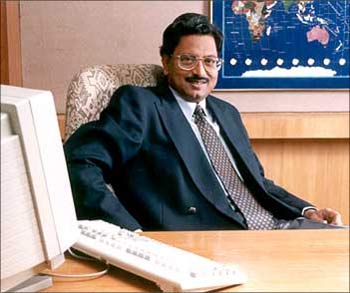
No less aggressively than he had built Satyam, Ramalinga Raju built an emergency healthcare provider called EMRI, starting in his home state of Andhra Pradesh.
Ramalinga Raju liked exploring the night sky. He fancied himself an amateur astronomer and had spent a small fortune setting up a private observatory, four storeys high, on his farm in Bahadurpally, outside Secunderabad.
Close friends who have been invited to spend nights star-gazing with him say the observatory is top notch: a 14-inch Celestron telescope fitted with a German equatorial mount and other digital equipment that is said to have cost almost a crore-and-a-half rupees (Rs 15 million). Whenever he could find the time, Ramalinga Raju would take the family for weekends at the farmhouse observatory.
"Astronomy was quite a passion with him," says his wife Nandini, "ever since he bought a telescope when he was in college. But it could be rather trying for the rest of us. Read on. . .
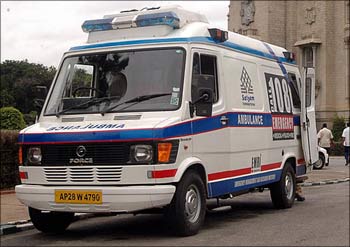
Raju would spend hours setting up the telescope and even more time looking at the stars while the family hung around." The farmer's son from Garagaparru village of West Godavari district was clearly fascinated by the stars...
Science, information technology, global best practices in management, ideas that had the potential to touch a very large number of people -- all these had to be integral to the social enterprises that would interest Ramalinga Raju.
Friends and associates say philanthropy came naturally to Ramalinga Raju, but only as initiatives that had wide impact and measurable outcomes. It was, perhaps, during his nights of star-gazing at his observatory that Ramalinga Raju fine-tuned the range of possibilities that would meet his criteria.
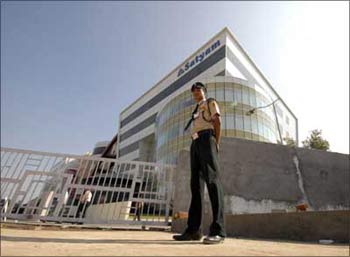
An emergency medical service (EMS) along the lines of 911 in the United States and 112 in the European Union was one such idea, and he nurtured it carefully.
He was impressed by the emergency services available in these countries and decided to set up a comparable facility in India.
True, India had the semblance of an emergency response system -- 100 for police, 101 for fire and 102 for ambulance -- but these were government services that worked erratically and independently of each other.
Ramalinga Raju wanted a coordinated service like 911 for Andhra Pradesh (population: 82 million) that would be free and accessible through a toll-free number that had instant recall among the people.

It would be 'a symbol of every citizen's Right to Safety', and he used a Peter Drucker quote to explain why he and his brothers had plumped for this project: 'Management is doing things right, leadership is doing the right things.'
As Ramalinga Raju conceived it, the ambulance service would be a world class facility. And he managed to do it in an extraordinarily short time.
Within three years, the Emergency Management and Research Institute (EMRI) that he set up in 2005 to run the free 108 ambulance service would leave even EMS experts from the US awestruck after a visit to the Devar Yamzal hub dispatch centre handling 50,000 calls daily, a fleet of 600 well-equipped ambulances, some of them with GPS, fanning out to respond to all kinds of emergencies, with trained emergency medical technicians handling situations with professional tact and care.
William A Haseltine, president of the William A Haseltine Foundation for Medical Sciences and the Arts of the US declared EMRI 'a modern marvel' when he came visiting in the middle of 2008.

Balaji Utla, the first Chief Executive Officer of Satyam Foundation, Satyam's in-house social responsibility arm which ran EMRI as a pilot, says, "Ramalinga Raju was a visionary. He could see far ahead, far beyond anyone else I knew. He would also goad us constantly to think beyond the boundaries. That's how you have a superb service like 108."
Even if EMS is not an original idea -- a number of individuals and voluntary organisations have been running ambulance services in scattered pockets of the country -- Ramalinga Raju brought passion, professional management and IT into the frame along with scale, and shaped EMRI into a classy service across a large swathe of the country.
As Utla points out, "India is all about scale. If you cannot achieve scale you simply cannot make an impact. Ramalinga Raju used to say, 'If one company can help solve one large problem of the country then think of what can be achieved if a dozen companies took up the major issues.'"
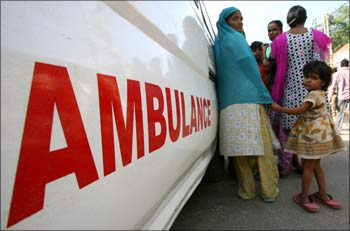
But was EMRI merely the testing ground for his most ambitious business foray or was it genuine philanthropy?
That billion-dollar question is just one of the many riddles surrounding this inscrutable entrepreneur who drew as much inspiration from Jim Collins' Good to Great treatise on fashioning exceptional companies as from Jared Diamond's Guns, Germs and Steel that chronicled the brutal history of humanity.
Was the joint venture that he set up with Cisco in October 2007 to market emergency management systems and healthcare solutions worldwide the real reason for investing all that energy and money in making EMRI a world class facility?
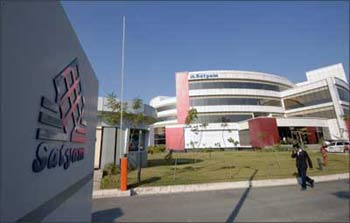
These are puzzles which are not easy to unravel because the perceptions of those who worked on EMRI and later Health Management Resources Institute (HMRI), an offshoot of EMRI, vary sharply.
"EMRI was a business plan from the very start," says a hospital management expert who joined the institute immediately after it was launched and spent three years with it.
"The idea was to develop systems that could be adapted and marketed to other developing countries as end-to-end solutions."
As early as February 2007, EMRI had spent Rs 1 crore (Rs 10 million) on TEMCON, an international convention on transforming emergency management that was intended to showcase the organisation's sophisticated operations. The turnout at the conference was disappointing, says the ex-employee, but the trajectory was clear.
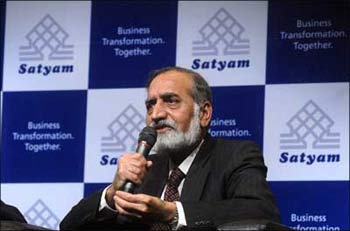
Then in October that year, John Chambers, Chairman and CEO of Cisco, made a stunning announcement during his visit to India. Cisco and Satyam Computer Services, he said, are "collaborating to explore a new venture that will optimise, deploy and manage solutions for handling medical distress situations and health management solutions for global markets".
Ramalinga Raju was on hand at the press conference in Bengaluru where he said: "Valuing and caring for life is a fundamental part of our society and has driven our social responsibility efforts. Collaborating with Cisco will help us in taking our services across the world sooner and faster. Our ultimate aim is to ensure easy access and healthcare services to the needy, across the world."
A press note issued by Cisco said the combination of Cisco's technologies with Satyam's processes and software application would help to build "a model that can be replicated across even the neediest parts of the world. The elegance of this model lies in its modularity and the scalability that internet protocol supports, together with a robust process framework which will enable services to be rolled out in a phased manner globally."
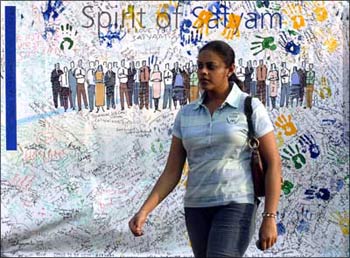
What makes EMRI such a saleable concept? The model is simple but effective. The 108 toll-free number connects callers to a 24x7 call centre which is staffed by trained communication, medical and police personnel (the fact that policemen are also stationed at EMRI's centralised call centre -- there is just one centre for the entire state handling 60,000 calls a day -- at Devar Yamzal on the outskirts of Hyderabad speaks volumes for the persuasive powers of the Satyam boss in selling his EMS idea to the authorities).
Within minutes, the caller's location is traced, through the GPS in a large number of cases, and a well-equipped ambulance with trained emergency medical technicians (EMTs) is dispatched to the site of the accident or the problem.
It takes no more than 25 minutes for the ambulance to reach the victims in rural areas and about 15 minutes in urban areas because these are strategically positioned. The ambulances are designed in-house and have state-of-the-art equipment -- they are equipped with defibrilators, ventilators, oxygen tanks, and a full cabinet of pharmaceuticals and drugs.

Users say the best part of the service is the virtual handholding that callers get from the doctors and paramedics on duty.
But for EMRI to go global it had to have impressive statistics that appears to be the reason for the frantic push to achieve impossible targets within a short time. The latest update puts the total number of calls handled by the service at 60,000 daily, ambulances at just over 1,500, and the number of employees at 12,800 (of whom 90 per cent are EMTs and drivers) and the number of lives saved at 40,000.
The results are gleaned from operations in nine states (Andhra Pradesh, Gujarat, Karnataka, Goa, Tamil Nadu, Rajasthan, Uttarakhand, Assam and Meghalaya); the service has failed to take off in two states where it has won the tender, Madhya Pradesh and Punjab.
Its stated objective is to save 1 million lives annually by taking the service across the country by 2010.
*****
Excerpted from: The Satyam Saga
Foreword: Kiran Karnik
Authors: Bhupesh Bhandari et al; Publisher: Business Standard Books; (Pages: xii + 186);
Price: Rs 395